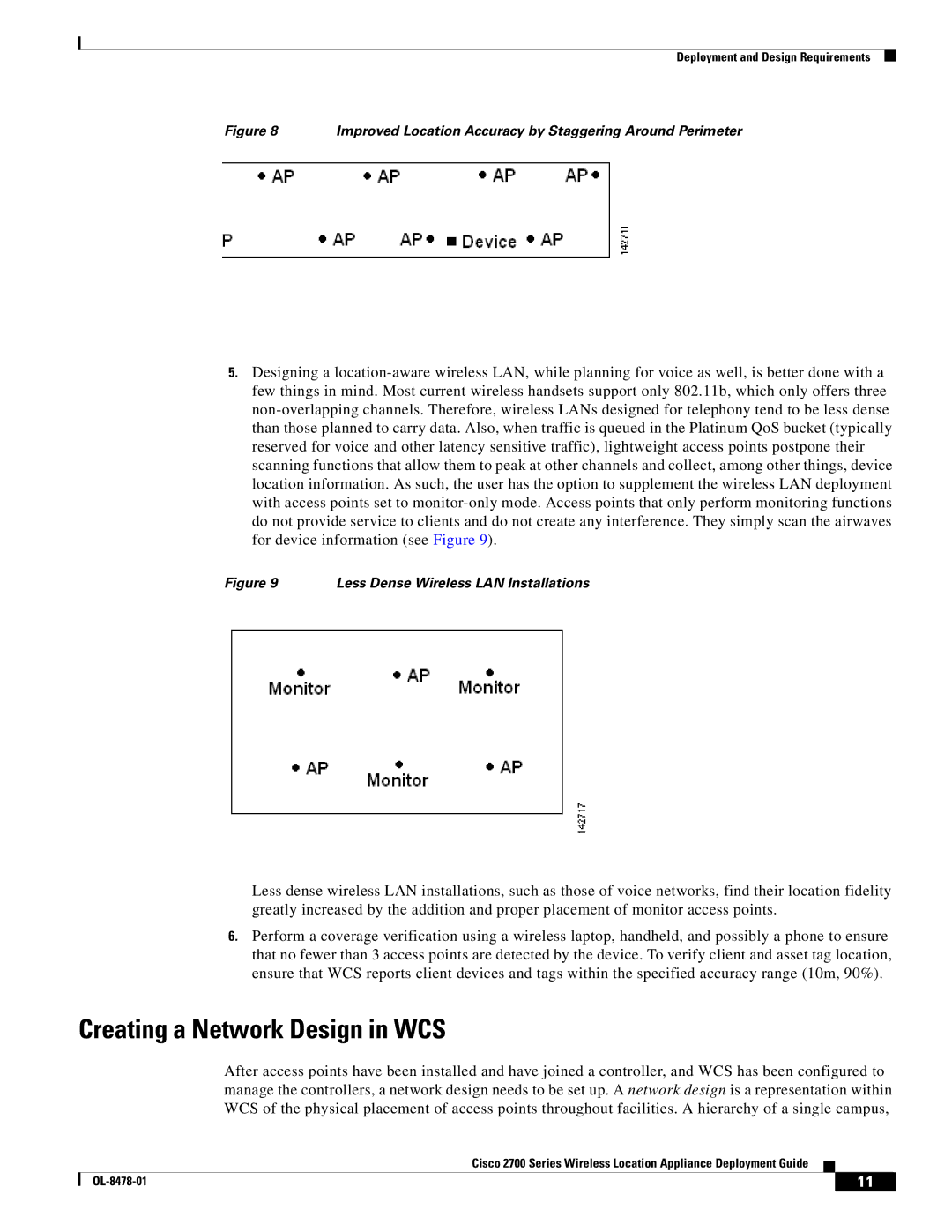
Deployment and Design Requirements
Figure 8 | Improved Location Accuracy by Staggering Around Perimeter |
5.Designing a
Figure 9 | Less Dense Wireless LAN Installations |
Less dense wireless LAN installations, such as those of voice networks, find their location fidelity greatly increased by the addition and proper placement of monitor access points.
6.Perform a coverage verification using a wireless laptop, handheld, and possibly a phone to ensure that no fewer than 3 access points are detected by the device. To verify client and asset tag location, ensure that WCS reports client devices and tags within the specified accuracy range (10m, 90%).
Creating a Network Design in WCS
After access points have been installed and have joined a controller, and WCS has been configured to manage the controllers, a network design needs to be set up. A network design is a representation within WCS of the physical placement of access points throughout facilities. A hierarchy of a single campus,
Cisco 2700 Series Wireless Location Appliance Deployment Guide
| 11 |
| |
|
|
